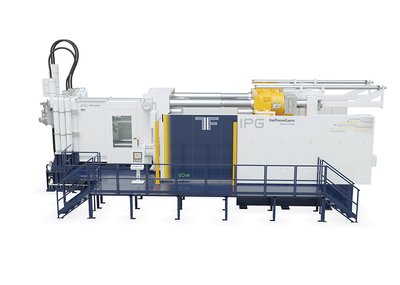Norican Group, home to DISA, ItalPresseGauss, StrikoWestofen and Wheelabrator, has signed its commitment letter to the Science-Based Targets Initiative (SBTi) – making the group the first among its peers to do so.
By signing up to emissions reduction and net zero journeys under the initiative, the group is committing to setting ambitious global targets for the emission of greenhouse gases, in line with what climate science says is necessary.
Following the commitment, Norican and its brands will now develop both near-term emissions reduction and longer-term net zero targets with the help of SBTi guidance, with a view to officially submitting its science-based targets for SBTi approval and start tracking performance against them in 2023.
Anders Wilhjelm, CEO of Norican Group, comments: “Sustainable development is the existential challenge and opportunity of our time. Bold ambition and action are needed, and they are needed now. The industries we serve can contribute significantly to the global effort to reduce greenhouse gas emissions. At Norican, we have a long tradition of continuous improvement, which we will continue and further strengthen. Beyond this, we’re in a unique position to support and influence the industry through the use of our production technologies and innovations, and this we find truly exciting.
“The SBTi provides standards, guidance and resources to businesses like us, who want to take meaningful climate action, as well as holding us accountable against targets set. We hope many of our customers and suppliers will join us on this journey.”
Norican Group is now listed on the SBTi dashboard, where its targets will be published once confirmed: https://sciencebasedtargets.org/companies-taking-action
Why science-based targets?
Science-based targets are emission reduction and net zero targets that are in line with what climate scientists say is necessary to meet the goals of the Paris Agreement and avoid climate catastrophe:
· limit global warming to well below 2°C above pre-industrial levels, and
· pursue efforts to limit warming to 1.5°C.
These targets show how much and how quickly individual organisations need to reduce their greenhouse gas emissions to prevent the worst effects of climate change.
Crucially, they clearly define and capture the exact scope of an organisation’s emission reduction efforts, including direct and indirect emissions. This means businesses are asked to not only look at their direct emissions (from their facilities and vehicles, for example), but also emissions generated up and down their value chains. This means engaging customers, suppliers and employees to bring down their emissions.
Anders concludes: “We have a long history of helping our customers improve their processes, from enhancing energy efficiency to reducing scrap. This is both good for the planet and good business. By signing up with the SBTi, we’re committing to take it to the next level.”












